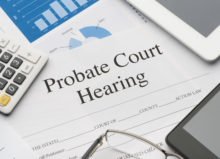An Overview on Trusts

Most estate planning clients have questions about Trusts. What are they? What are they for? Do I need one? This blog entry will answer some of those questions.
By definition, a Trust is a relationship between three persons:
- The person who creates the Trust, often called the Settlor, Grantor, or Trustor
- The person who manages the Trust, usually called the Trustee
- The person who is entitled to receive the assets of the Trust, usually called the Beneficiary
Technically speaking, a Trust does not have to be in writing if the terms of the Trust do not relate to disposition of the Settlor’s estate after the death of the Settlor. For estate planning purposes, however, Trusts are always in writing. Further, they must be signed and witnesses with the same execution formalities as a Last Will and Testament.
There are many kinds of Trusts. If you search for ‘trusts’ online, you will find references to irrevocable trusts, revocable trusts, living trusts, charitable trusts, Totten trusts, constructive trusts, asset protection trusts, credit shelter trusts, Medicaid trusts, and many more types. Covering all of these types of trusts is well beyond the scope of this blog!
One useful distinction in the world of Trusts is between Revocable Trusts and Irrevocable Trusts. A Revocable Trust is, generally speaking, a Trust that the Settlor can modify and even terminate during the Settlor’s lifetime. An Irrevocable Trust is, generally speaking, a Trust that cannot be modified or terminated by the Settlor.
Note the use of the term ‘generally speaking’ in the prior paragraph. It is possible to include provisions in a Revocable Trust to cause portions of the Trust to be irrevocable by the Settlor. It is also possible for an Irrevocable Trust to be modified or terminated. It all depends on the terms of the Trust and the law at the time.
For example, clients on occasion want to modify a Trust that was Irrevocable when it was created. That may be possible. The first place to look is the Trust document. Although a Trust may say ‘Irrevocable’, there may be provisions in the Trust that allow some types of changes. Sometimes, the Trust will say that changes may be made by the Settlor, the Trustee, the Beneficiaries, or even people who have no other role in the Trust. Accordingly, the first step is to read the Trust document carefully.
The second step in considering whether it is possible to make a change to an Irrevocable Trust is to look at the law. The law in the State of Florida currently permits limited types of changes to Irrevocable Trusts. In some instances, those changes require the consent of the Trust Beneficiaries. In other cases, the matter must be presented to a Judge to obtain the Judge’s approval.
Speaking of ‘generally speaking’, it is also possible to create a Revocable Trust and include provisions in the Revocable Trust that cannot be changed (in other words, a Revocable Trust may have irrevocable provisions). For example, a Revocable Trust may say that the Settlor may not change the Trust so as to disinherit a Beneficiary, or that the Settlor may not change the Trust so as to reduce the compensation payable to the Trustee. Because the Settlor creates the Trust document, the Settlor may create provisions in the Trust document that limit the Settlor.
Another common question is who should serve as the Trustee of the Trust. The Trustee has control over the assets of the Trust. Accordingly, if the Trustee decided to steal the assets, the Trustee could probably do so. The Trustee may not get away with it if caught, as the law obviously punishes theft, but the point is that the Trustee would likely succeed in an effort to take assets from the Trust.
With that in mind, it is essential to think about whom you will name as your Trustee. The number one suggestion is to name someone you trust without hesitation – someone you believe would be very unlikely to steal from the Trust or otherwise engage in misconduct. You might think that your family member wouldn’t make a good Trustee because they don’t understand how to invest money or manage real property, but those issues are not the most important. In that situation, you might have the best result by naming your family member as Trustee and letting the Trustee hire the help they need.
Next, let’s consider how Trusts are commonly used. The two primary reasons clients create Trusts seem to be:
- To Avoid Probate. ‘Probate’ is a court-supervised process that oversees the distribution of a decedent’s estate. By creating a Trust and titling the Settlor’s assets into the Trust, it is possible to avoid probate administration. Note that there are two steps required to avoid probate: creating the Trust and titling assets into the Trust. That means that, after you sign your shiny new Trust, you must take steps to title your assets into the Trust. For example, you may need to go to a bank and re-title your accounts into the Trust, or you may need to file a deed titling your real property into the Trust. There are various ways to accomplish the titling portion of this process, and pros and cons to these different ways, so it’s good to ask questions as you re-title your assets into your Trust.
- To Provide For Distribution Over Time. Often, parents want their children to inherit the parents’ estate, but they do not want the children to receive the entire inheritance at once. This may be because the children are still young, or because of concerns about possible creditors or divorces, or other reasons. Legally, a Settlor may create a Trust that provides for distributions to Beneficiaries over a long period of time, even over the entire lifetime of the Beneficiaries. The Trust can also provide for contingent Beneficiaries to inherit if the primary Beneficiaries die before receiving their entire inheritance. A common approach is to permit distributions from the Trust to children for their care while they are young, but delay ultimate distribution of the Trust assets to the children until they reach a certain age. I have seen client get very creative about how and when the assets of the Trust are distributed to their children!
Those are certainly not the only reasons why people create Trusts, but they seem to be the most typical. Other reasons include estate tax reduction, asset protection, providing for a special needs child, and Medicaid planning. These kinds of Trusts, like all Trusts, require a great deal of thought and planning. It is important to determine your primary objectives and ask questions as they arise.
As always, the discussion in this blog is based on general principles – and the details matter a great deal. If you have questions of your own, please give us a call at 239.593.7900.










